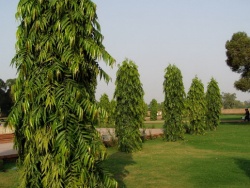Difference between revisions of "Ashoka tree"
| Line 9: | Line 9: | ||
[http://www.sgilibrary.org/search_dict.php www.sgilibrary.org] | [http://www.sgilibrary.org/search_dict.php www.sgilibrary.org] | ||
[[Category:Buddhist Terms]] | [[Category:Buddhist Terms]] | ||
| − | [[Category: | + | |
| + | [[Category:India]] | ||
| + | [[Category:Maya(Buddhas mother)]] | ||
Revision as of 09:07, 30 May 2013
ashoka tree
[阿輸5樹・無憂樹] (Skt; Jpn ashuka-ju or muu-ju )
Also, Asoka tree or sorrowless tree. A tall leguminous tree that produces beautiful orange- or scarlet-colored blossoms. It is found in India, Sri Lanka, and other tropical countries, and used as timber. The Sanskrit word ashoka is translated in Chinese as "free from distress," and thus the ashoka tree is often referred to as the sorrowless tree. Tradition has it that, when Maya, Shakyamuni's mother, reached for a branch of this tree to pick its blossoms in the grove at Lumbini, she gave birth to her son. For this reason, in Buddhism the ashoka tree is considered sacred, along with the Bodhi tree under which Shakyamuni attained Enlightenment, and the sal tree representing his entrance into Nirvana. Shakyamuni died in a grove of sal trees.
